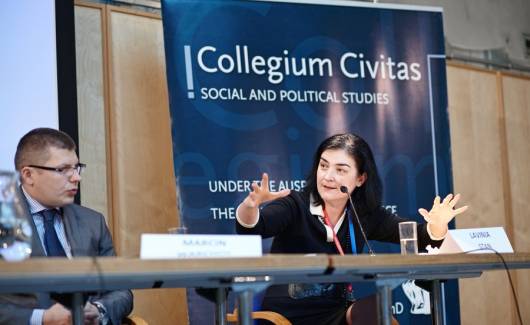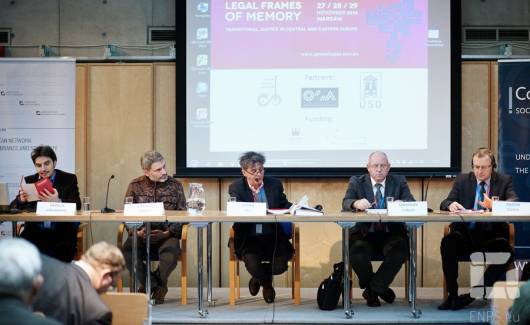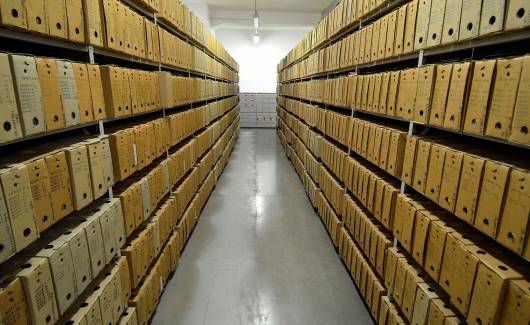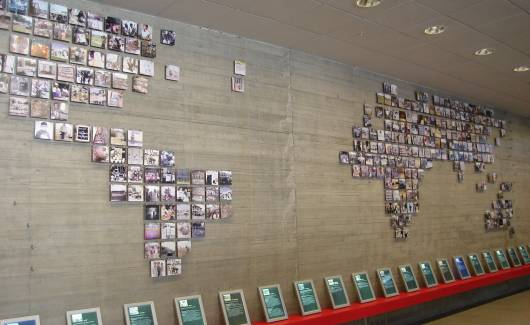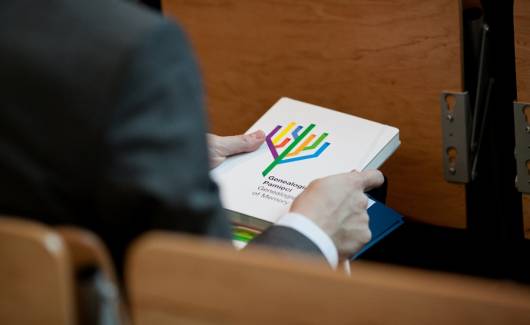Interview with Professor Lavinia Stan: The Romanian example has shown that demands for radical accountability can lead to a situation in which hardly any account settling occurs.
Andrzej Stankiewicz: What is transitional justice, especially in our part of Europe?
Lavinia Stan: This is an attempt to settle accounts with the legacy of a dark and gloomy past. The countries of our part of Europe have had a difficult Nazi and communist past. In Romania, this included crimes committed during the revolution, and in former Yugoslavia – during the civil war.
But this is an entirely different fate, a different kind of gloom. Does any common denominator, therefore, exist when it comes to settling accounts with the past?
There are practices and processes that have been common to nearly all the region's countries. It is another matter whether this has resulted from a mutual flow of ideas or taken shape independently. Those common areas pertain to politics, public debate and the legal situation. In most cases account settling has involved judicial proceedings. Access to secret police files was provided. The issue of restitution of illegally taken-over property emerged, although at times little has come of it, as in Poland's case.
Our region's specific feature has been vetting – one of the most controversial instruments of justice in the transformation period. Another important phenomenon has been memorialisation – the destruction of some monuments and their replacement with others, as well as a change of symbols and street names.
You are studying the influence of civil society on account settling with totalitarian systems, and focus on the perspectives of three different groups: victims, the intellectual elite and the totalitarian elite (‘nomenklatura’).
Nearly everyone wants to regard themselves as victims of the former system. But not all of us were victims. Most people supported the dictatorship through their passivity. But how many people of my generation will admit it?
Each of these groups – true victims, the system's dignitaries and intellectuals – perceive justice of the transformation period differently. Let's take Romania. Victims demanded radical vetting, putting secret informers of the Securitate on trial and sacking them from their jobs. To people wronged by the regime, vetting regulations were never sufficiently severe. They wanted to entirely eliminate people of the ancien régime from public life. Punishing collaborators became a symbol of justice to them. Such demands emerged soon after the collapse of the dictatorship of Nicolae Ceauşescu in the Timişoara Proclamation of 1990. These, of course, were never fulfilled by the political class, which in Romania was in a large part rooted in the former Communist Party.
In Poland the former democratic opposition was divided to a greater extent. A portion of the right-wing politicians demanded vetting, whilst centre-left politicians were opposed.
In Romania such harsh rhetoric by the regime's victims resulted from the way the dictatorship was overthrown – in bloody revolution. We lacked ‘round-table’ talks. Because of the bloodshed, the regime's victims did not want dialogue with their former oppressors, and it boiled down to a case of ‘we or they’. At the same time, the Romanian example has shown that demands for radical accountability can lead to a situation in which hardly any account settling occurs.
You ascribe none too flattering a role to intellectuals, accusing them of agreeing to some measure of account settling while blocking attempts to bring the dictatorship to account.
In Romania intellectuals played a significant role because some of them were dissidents, whereas in our country there were few such people. We do not have a civil society; hence nothing like Solidarity ever arose in Romania. After the revolution, intellectuals became very influential. It was they who made public opinion aware of the demands on which accountability was based. But mindful of the victims, intellectuals always softened the demands.
Subsequently, it turned out that some of the intellectuals had a disreputable past by virtue of having collaborated with the regime. Intellectuals politicised account settling and diminished public support for transformation solidarity.
The third group comprised Communist Party dignitaries, people attached to special services and other beneficiaries of the former system. In most of the region's countries they retained significant influence on public and political life for years.
When I initially became involved with transitional justice, my research focused on groups advocating account settling. But in Romania, I saw a different situation with my own eyes.
One of the most vociferous groups were tenants residing in property that had been illegally taken from its former owners. To make things clear, these were not poor workers or rank-and-file hirelings of socialism, but representatives of the former regime's elite. Very quickly they organised themselves, acted very effectively and blocked the restitution of property to the heirs of their former owners.
They convinced politicians to legally safeguard their interests including the right to continued residence in flats confiscated during the communist era and their purchase in the event that their former owners had no heirs.
Perhaps there are countries in our region where transitional justice is only a pretence?
Even in Romania, which has done less in many areas than other Central European countries, there has been clear progress in the realm of transitional justice. In spite of everything, some real estate is being returned, and this process is far more advanced than in Poland. Restitution of the property of the biggest religious denomination, the Eastern Orthodox Church, as well as the Greek Catholic Church is moving forward.
Which country is the most advanced in terms of account settling?
The Czech Republic, Slovakia, Poland, Hungary and the Baltic states have done the most to settle accounts with the past. In Romania and Bulgaria there are regulations on the books enabling account settling, but life is what it is, and a great deal still needs to be changed. Albania and the post-Soviet countries of Central Asia have achieved the least.
What about Russia?
Russia is regressing compared to the Gorbachev era.
When will the administration of transitional justice be completed in our part of Europe?
It will not end as long as a significant portion of society continues to lodge claims that the authorities are unable to fulfil. In Poland, the question of property restitution must be resolved. This issue has far-reaching legal and financial consequences, and thus account settling with communism cannot be completed without resolving it. In Romania, authentic vetting continues to be a problem, Up until 2006, secret files were controlled by the new security services that were largely comprised of former Securitate officers, as there was no verification of special services in Romania. Access to these files continues to be limited. Please do not ask whether vetting makes sense this late in the game – this is an entirely different matter. However, the victims do need a symbol.
Do you support settling accounts with former Communist Party leaders by means of court proceedings?
I know that discussions are also under way in Poland as to whether a dictator who has peacefully handed over power should be absolved of his past transgressions. Personally, I believe dictators should be put on trial if there is evidence that they broke the law.
Interviewed by Andrzej Stankiewicz (Rzeczpospolita)
>>Professor LAVINIA STAN is a Romanian political scientist with books and articles to her credit. She is employed at the Centre for Post-Communist Studies at Canada's St Francis Xavier University. A year ago, together with Dr Nadya Nedelsky, she published the Encyclopaedia of Transitional Justice, the first comprehensive work devoted to the accountability of dictatorial regimes.
